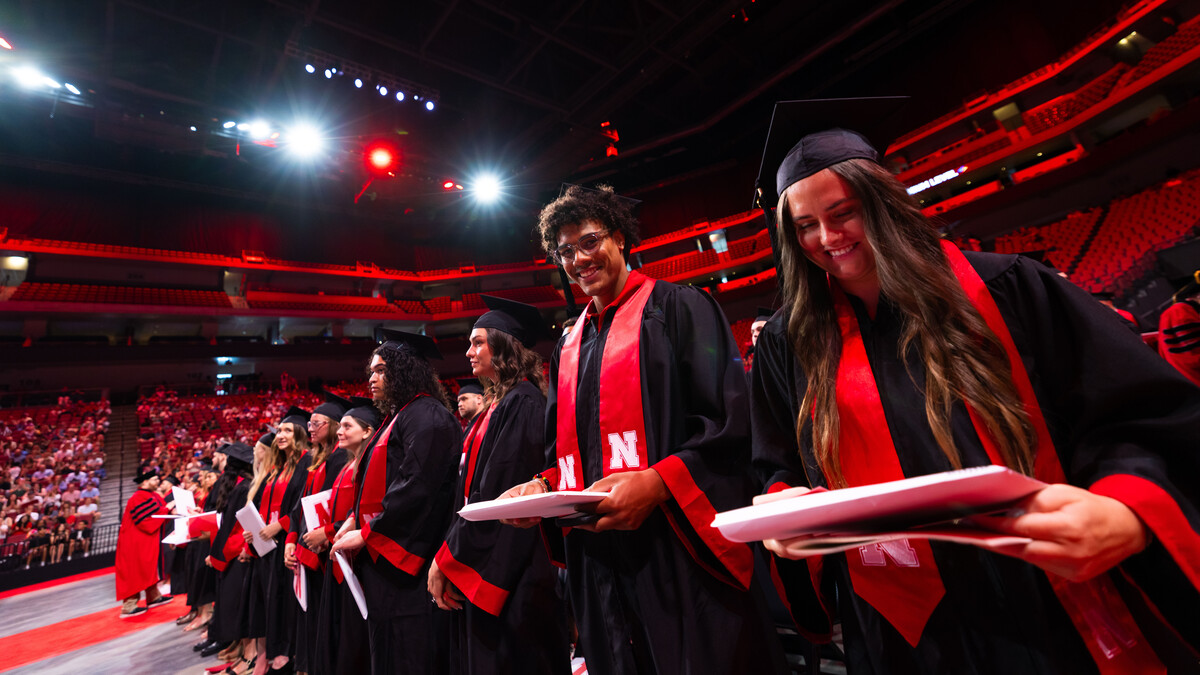April 16, 2014
LINCOLN, Neb. — Arbor Day – a day to remind us of the beauty and usefulness of trees and oftentimes a day to plant a new tree – is April 25 in Nebraska.
University of Nebraska-Lincoln Extension/Nebraska Forest Service forester Dennis Adams says each year more than 1 million tree and shrub seedlings are planted in Nebraska.
These trees are used for windbreaks, wildlife habitat, watershed protection, wood products and other conservation purposes. Conservation tree and shrub seedlings are typically small, bare-root, 1 to 2 years old, and about 12 inches tall.
The best season to plant conservation trees in Nebraska is spring, from about mid-March after the frost is out of the ground, until about mid-May, when it often starts to become hot and dry, which is what makes Arbor Day the perfect time to plan a tree, Adams said.
If planting a seedling this year, ideally it should be planted the same day it is received from the nursery, Adams said.
"However, oftentimes, weather and busy schedules postpone planting," he said. "The best conditions for planting are cool, humid, cloudy days. However, if planting has to be done when it is hot and/or windy, planting in early morning or evening provides the best conditions for handling seedlings."
Care should begin as soon as the seedlings are received from the nursery. The box, bag, or other shipping container should be opened and the seedlings inspected.
If the seedlings are in good condition, plant them as soon as possible. Always keep the seedlings moist and cool during storage, transport and planting. Never allow the roots to dry or overheat. Although tree roots need moisture to survive, they also need air. Don't store seedlings in a bucket of water.
If seedlings can't be planted the same day, a cold storage unit or home refrigerator, which maintains a temperature of 34 to 40 degrees Fahrenheit, is ideal for maintaining dormancy of the seedlings.
Since most people do not have access to a walk-in cooler or don't want to store tree seedlings next to the leftovers in the home refrigerator, the next best place to temporarily store seedlings is in a cool, shaded location, like a cellar or basement, that doesn't experience temperature extremes.
If seedlings are to be planted in less than seven to 10 days, leave them in the shipping box. Don't allow them to freeze or overheat. Check the seedlings daily and keep the roots moist, but allow for drainage of excess water.
If seedlings must be stored for more than seven to 10- days, and cold storage is not available, the last resort may be to "heel in" seedlings in the ground. Heeling-in involves temporarily planting seedlings in a v-shaped trench in a cool, shaded location until they can be transplanted.
When it is time to plant seedlings, they should be protected from wind and sun during transport and at the planting site. Before planting, make sure the roots and tops are not damaged and keep the roots moist.
During actual planting it is critical to protect the roots from drying. Even less than a minute of exposure can kill fragile roots. During planting it is OK to carry small quantities of seedlings in a bucket of water, but don't keep the roots in water for more than an hour.
Good site/soil preparation should occur well in advance, preferably the fall before planting. Mellow, friable soil is the best condition to plant seedlings into.
Regardless of whether seedlings are hand planted in a planting hole or machine planted in a furrow, the seedlings should be planted at the same depth, or slightly deeper, than they grew in the nursery. Planting too shallow or too deep may drastically affect survival. To prevent future problems, the planting hole or furrow should be deep enough to accommodate the root system without J-rooting.
Lastly, firm the soil around the seedling to prevent air pockets. It is always beneficial to water seedlings after planting to settle the soil and create a moist soil environment for the new roots.
Care shouldn't end after the seedlings are planted. Good weed control, pest control and supplemental water may help ensure successful establishment and good growth. Check new tree and shrub plantings regularly to identify any problems or needs.
Arbor Day, which was created in Nebraska, was conceived and named by J. Sterling Morton, then president of the State Board of Agriculture, and later U.S. Secretary of Agriculture. It was first observed in 1872.Dennis Adams
Forester
UNL Extension/Nebraska Forest Service
402-472-5822
dadams2@unl.edu
Sandi Alswager Karstens
IANR News Service
402-472-3030
skarstens2@unl.edu







